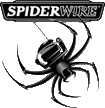January 9, 2009
Redfish Tournament Strategy for Emerald Coast Redfish Club
Choosing a partner
In professional tournament redfishing, choosing a partner is very important. First and foremost, you must enjoy fishing with this angler and confident in winning with this angler. A partner should compliment you as an angler and hopefully pick up the slack in areas that you may not excel. In a partnership or a team, there is no “Iâ€, you win and lose together. One partner may be a better angler, but the other angler is a great with a pushpole. It’s also very important that one angler be someone mechanically inclined. Know your role, own it and take pride in it.
In my case and experience with my partner, I am the angler who fishes from the bow. My partner is very experienced on the pushpole and very comfortable looking for fish from the poling platform. My partner and as I me, are very comfortable with all systems of our boat, trailer and motor.
It’s a great idea to designate specific tasks to each member of the team. This not only holds true during the tournament events but throughout the entire year. I am responsible for sponsorship relations, tackle and bait orders, maintenance on the boat, etc. My partner may be responsible for travel itineraries, event research before prefishing, etc. During the event, my partner takes care of all boat maintenance and minor repairs, food and drink selection and other things. One thing that we do not share is preparations of our rod and reels. We each tie our own leaders, knots, spool reels, etc.
Controlling the Variables that are Controllable
It’s difficult to control the fish and the weather, but there are variables in tournament fishing that can be controlled. I never leave details over looked and I am infamous for late night pacing in hotel parking lots. Â One of the most, if not THE most important, tools in your tournament redfishing is your boat and trailer. These tools have to be in perfect operating order. Before leaving for an event, I check everything on my trailer. Lights, lug nuts, tires, grease, breaks, spare tire, etc. I take the boat for a spin in the bayou one week prior to leaving for an event to make sure everything is perfect. Motor, trolling motor (carry a spare), pumps, lights, fuses, GPS, PowerPole, jackplate, etc. I carry extra plugs, bulbs, wiring, fuses, pumps incase there’s problems. I am lucky to have Ships Chandler and I never have problems with my equipment.
Pre-tournament Research
Often times, preparation for a tournament can happen months in advance. Advance research is very helpful especially if you’ve never competed on a body of water ever before. The internet is an excellent resources for finding redfish in locations all over the SE. GoogleEarth, Mapquest, Saltwater Tides, local fishing forums, fishing reports, local newspaper columns are all great places to find redfish in the event area. Be sure to check with tournament officials for the rules.
Things that should stay on the boat
There are items that should never leave your tournament boat. Net, measuring boards, digital scale, Boga, fish markers, radio, Rejuvenate, first aide kit, all safety gear and lifevests, extra oil and fluids, tool kits, fuses, duct tape and all items that would be a disaster if not present.
Finding Redfish
The week or so period before a redfish event is called the prefishing period. The objective during this time is to find as many redfish as possible. Short runs from the takeoff leave you with greater fishing time, longer runs leave you with shorter time. I look for tide, water clarity, weather and wind conditions to determine mine targeted areas. My personal preference is to run long and hard. Most times, long runs lead you to more unmolested and more cooperative fish. Many times, areas within 20 miles of the event have been picked over by most of the anglers resulting in difficult fish and sometimes no fish. If I am making a long run, I try to set up a straight-line milk run on the way back. My A spot may be 40-100 miles away, but I will have 2-4 spots coming back just incase. I am comfortable enough with all locations in the SE and up the ATL coast to know where I will be fishing, but again, tide, water clarity, weather and wind will dictate this as well.
Once fish have been found and depending during which prefishing day, I try to stick 2-3 fish to get a length and weight. Also, I will experiment with various baits without hooks to determine which baits and retrieves the fish prefer. For the most part, your most comfortable baits and techniques will do the trick but this cannot be overlooked.
The last day of prefishing should be spent checking all these spots, but do not stick fish on this day.
The night before the tournament is a time for reflection and making the game plan. By this time, your game plan should be pretty obvious, if not, you’ve got problems!! Haha Discuss what routes will be taken to Spot A, B, C and D. Make plans if thing don’t go well right off the bat. Make a plan that you both agree on and stick to it!!! Stick to it!!! Do not go prefishing during the event.
By this time, you also know which bait, rods, reels, etc. you will be using to catch your tournament fish. I like to rig 3-4 rods EXACTLY alike with the same line, fluoro, rods, reels, baits, everything the same. Breakoffs, hookpulls and windknots happen, so be prepared and have your extra sticks ready.
I tied new leaders each night and new knots. Sharpen hooks again.
Keeping your redfish alive
Redfish tournaments require the team to produce two live and healthy redfish. Your boat should have some form of a release well. A fill pump and an aerator pump are best used in combination but just a fill pump will do. When fighting your redfish, it is extremely important to get that fish to the boat as quickly as possible. Long fights means the fish will be extremely tired on arrival and with measuring and weighing the redfish, he will remain out of water for a long period of time. Although redfish are very durable compared to many other species, it’s very beneficial to care for your fish properly. If a fish is struggling, the best thing to do is hold it in the net along side the boat. Keep the fish upright and let the fish regain its strength before placing him in the livewell. Rejuvenate is an excellent product to help keep your redfish healthy in the well. Also, ice during the summer months will help revive fish quickly. Just remember to use the recirculation pump to keep the ice water in the well. When a fish is first place into your well, keep the lid open so that you can keep an eye on your fish incase they roll over. They also seem to respond positively to sunlight while in the calming process.
That’s it!!!







